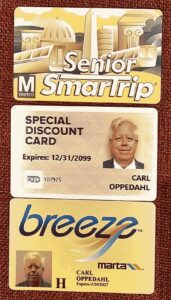 Hello dear reader. It was on July 23, 2024 (blog post) that I first tried to get my blog set up so that it would auto-post to Bluesky. By now it seems I have succeeded (Bluesky). Another notable intellectual property blog that has succeeded is The TTABlog (Bluesky). The World Intellectual Property Organization has succeeded (Bluesky).
Hello dear reader. It was on July 23, 2024 (blog post) that I first tried to get my blog set up so that it would auto-post to Bluesky. By now it seems I have succeeded (Bluesky). Another notable intellectual property blog that has succeeded is The TTABlog (Bluesky). The World Intellectual Property Organization has succeeded (Bluesky).
Previous Bluesky test seems to have worked
Does your bank participate in FedNow?
 FedNow (Wikipedia article) is an instant payment service developed by the Federal Reserve for depository institutions in the United States, which allows individuals and businesses to send and receive money. FedNow is intended to be faster and less expensive than other traditional ways that banks in the US send money to each other. FedNow is instant, which is better than the delays of hours or even days for ACH and bank wire transactions. Bank customers, including businesses and individuals, can benefit greatly from FedNow. Does your financial institution participate in FedNow? Continue reading “Does your bank participate in FedNow?”
FedNow (Wikipedia article) is an instant payment service developed by the Federal Reserve for depository institutions in the United States, which allows individuals and businesses to send and receive money. FedNow is intended to be faster and less expensive than other traditional ways that banks in the US send money to each other. FedNow is instant, which is better than the delays of hours or even days for ACH and bank wire transactions. Bank customers, including businesses and individuals, can benefit greatly from FedNow. Does your financial institution participate in FedNow? Continue reading “Does your bank participate in FedNow?”
I unplug a VOIP phone, and later I receive an email telling me it got unplugged
Yes, just an hour ago I unplugged a VOIP phone, and 45 minutes later I received an email telling me that it had gotten unplugged. It means that my spiffy new SIP trunk monitor is working.
It will be recalled (see blog article dated June 25, 2023) that I fished for people to join me in an open-source project. The idea was to set up some PHP script that would run periodically, interrogating an API at the VOIP.MS company, querying the registration status of a long list of SIP trunks (what the company calls “subaccounts”). Now I have this working, in a sort of simple way.
This kind of monitoring actually monitors quite a few things. Suppose the VOIP device being monitored is a desktop phone. Then this monitor will tip me off if any of these things happen:
-
- Somebody unplugging the phone itself.
- Failure in the power-over-ethernet delivery of power to the phone.
- Loss of Internet connectivity at the place where the phone is located.
You can read about it here.
Looking to get somebody to write some PHP code for me
(Update: prompted by helpful comments from readers, I was able to write the code myself. Click on the link to see the happy results.)
Hello readers. I wonder if somebody knows a PHP coder who would like to get hired to write some PHP code for me? Here is a description of the code that I hope to pay somebody to write.
Another try with Bluesky and Mastodon
Well, folks, I am only slowly making progress at setting up Bluesky and Mastodon on this blog. This is a test posting on this blog to see if it propagates through to Bluesky and Mastodon.
As best I can discern, my Bluesky identifier is @oppedahl.com “ant-like.bsky.social” and my Mastodon ID is “@ant_like@mastodon.social”.
If any reader is an experienced user of Bluesky or Mastodon, I’d be grateful if you can look to see if I have made progress.
Mastodon, Bluesky, and RSS

 Recently John Welch, the author of the TTABlog, posted to the e-Trademarks listserv to ask this:
Recently John Welch, the author of the TTABlog, posted to the e-Trademarks listserv to ask this:
I’ve been tweeting my blog posts for many years now, but I am fed up with the increasingly vile content on X/Twitter.
Can anyone recommend a good alternative?
Several listserv members offered very helpful suggestions. Perhaps the most helpful response was from Rebecca Tushnet, who wrote:
It is true, by the way, that John’s TTABlog is indispensable.
I have just now added a couple of plugins to my blog that I hope will automatically feed my blog postings to both Mastodon and Bluesky. I would be grateful if a reader who uses Mastodon can take a look to see if I succeeded. Likewise, I would be grateful if a reader who uses Bluesky can take a look to see if I succeeded.
I have also added an RSS feed icon which you can see at right. I would be grateful if a reader who uses an RSS reader can take a look to see if I succeeded.
One dollar to get to the Atlanta airport redux

(Note: this posting replaces the similarly titled posting on May 20, 2024. It provides a report on the results of the trip to the Atlanta airport and it offers examples of other more sensible rapid transit senior discount cards.)
The reader will recall that I had been in Atlanta in recent days to host the eleventh annual e-Trademarks listserv reception. During my time in Atlanta, I obtained a Senior Reduced Fare card for MARTA, the subway system in Atlanta, which is the bottom card at right, called “breeze”. I qualified for this card by being 65 years of age or older. (The other way to qualify is to have a disability.) This process is by now rather familiar to me, since I had previously obtained a senior discount card from the Washington Metro (top card at right, called “Senior Smartrip”) and from Denver’s Regional Transportation District (middle card at right, called “Special discount card”).
The Washington Metro Senior Smartrip card has no expiration date. The Denver regional special discount card recites an expiration date, but it is some 65 years in the future, a date I think I can safely ignore. But as you will see the Atlanta MARTA card unaccountably bears an expiration date a mere three years in the future.
It is understandable, I suppose, for such a reduced-fare card to have an expiration date in the near future if the way that the card holder were to qualify is by having a disability — I suppose there is some chance that the disability might go away at some later time. But it strikes me that the status of “being 65 years of age or older” cannot cease to be the case merely because of the passage of three years. Nonetheless you see that MARTA has in mind that I will need to go again to their headquarters in Atlanta three years from now, and to present myself in person, to prove that I continue to be at least 65 years old.
Oh, and for those keeping score at home, I can report that my trip to the Atlanta airport on May 21, 2024 did take place as planned, was very pleasant, and did cost a mere one dollar. The trip was faster than a trip to the airport by taxi or Lyft or Uber would have been.
One dollar to get to the Atlanta airport
This blog article, originally posted on May 20, 2024, has been replaced by a follow-up posting on May 23, 2024. The follow-up posting provides a report on the results of the trip to the Atlanta airport, and it offers examples of other more sensible rapid transit senior discount cards.
Setting up a security camera system
 These days, most people who want to have security camera systems choose cloud-based systems. The cloud-based systems have recurring costs, and it is anyone’s guess how badly one’s privacy could be violated in the cloud. Wouldn’t it be nice if there were some way to set up a security camera system that is completely self-contained, that does not send video data to a cloud, and that has no recurring cost? The alert reader will have no difficulty guessing where this article is going. Of course there is a way to set up a security camera system that is completely self-contained, that does not send video data to a cloud, and that has no recurring cost. For convenient reference I will give a name to such a system: “a good system.” I have set up a page describing how to set up a “good” security camera system.
These days, most people who want to have security camera systems choose cloud-based systems. The cloud-based systems have recurring costs, and it is anyone’s guess how badly one’s privacy could be violated in the cloud. Wouldn’t it be nice if there were some way to set up a security camera system that is completely self-contained, that does not send video data to a cloud, and that has no recurring cost? The alert reader will have no difficulty guessing where this article is going. Of course there is a way to set up a security camera system that is completely self-contained, that does not send video data to a cloud, and that has no recurring cost. For convenient reference I will give a name to such a system: “a good system.” I have set up a page describing how to set up a “good” security camera system.
